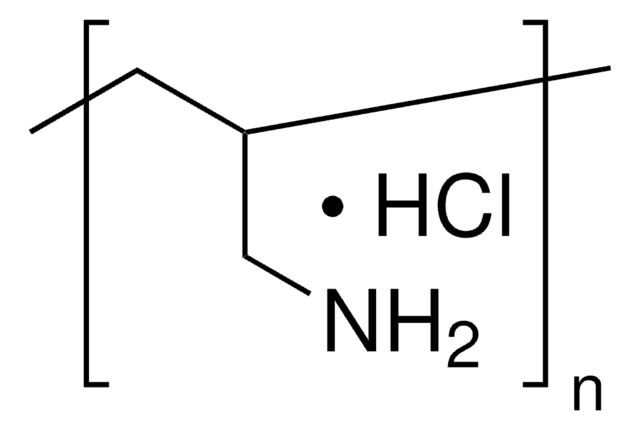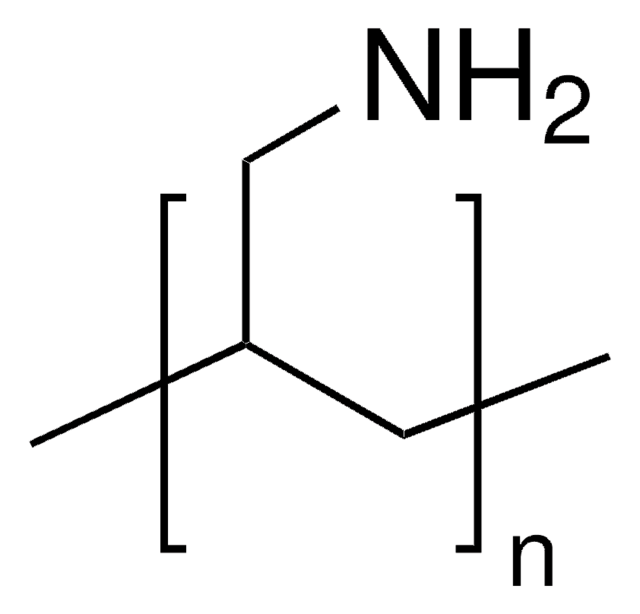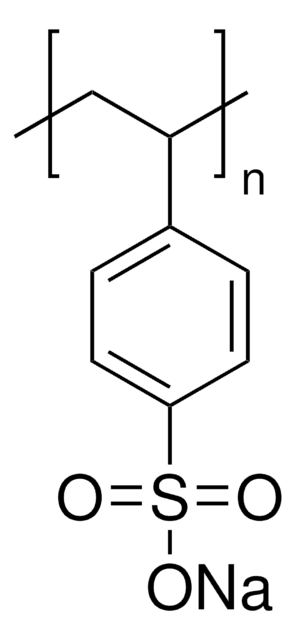283215
Poly(allylamine hydrochloride)
average Mw ~17,500 (GPC vs. PEG std.)
Synonym(s):
PAA HCl, PAH
About This Item
Recommended Products
form
solid
mol wt
average Mw ~17,500 (GPC vs. PEG std.)
SMILES string
Cl.NCC=C
InChI
1S/C3H7N/c1-2-3-4/h2H,1,3-4H2
InChI key
VVJKKWFAADXIJK-UHFFFAOYSA-N
Looking for similar products? Visit Product Comparison Guide
Related Categories
General description
Application
- Chitosan/PAH polymer blend films by solution casting technique. These films can be employed in injectable drug delivery systems and tissue generation.
- Cross-linked amino-modified graphene oxide for the removal of Cr(IV) from aqueous solutions.
- Polyelectrolyte multilayers(PEMs) by the layer-by-layer method. These PEMs can be used to prepare controlled drug delivery systems and coatings with controlled cell adhesion properties.
Features and Benefits
- Excellent environmental stability
- Water-soluble
- Low cost
Signal Word
Warning
Hazard Statements
Precautionary Statements
Hazard Classifications
Acute Tox. 4 Oral - Skin Sens. 1
Storage Class Code
11 - Combustible Solids
WGK
WGK 1
Flash Point(F)
Not applicable
Flash Point(C)
Not applicable
Personal Protective Equipment
Choose from one of the most recent versions:
Already Own This Product?
Find documentation for the products that you have recently purchased in the Document Library.
Customers Also Viewed
Articles
Our research impacts on the hydrogen energy economy through the development of “smart” nanofilms for the protection of metal hydrides against air and moisture, while permitting release of hydrogen gas through these semi permeable nanofilms.
Layer-by-Layer (LbL) Assembly, A "Gentle Yet Flexible" Method Toward Functional Biomaterials
We present an article that discusses two applications in particular; first, using these layers as polyelectrolyte membranes to control permeability.
Our team of scientists has experience in all areas of research including Life Science, Material Science, Chemical Synthesis, Chromatography, Analytical and many others.
Contact Technical Service









